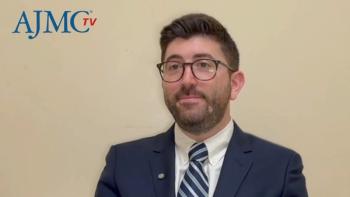
Dr Dennis Scanlon Discusses IRA Part D Changes Intended to Expand Access
Dennis Scanlon, PhD, professor of health policy and administration at the Pennsylvania State University, discusses some of the reasoning behind Part D benefits changes in the Inflation Reduction Act (IRA) and the cost questions that remain.
The changes to Part D benefits in the Inflation Reduction Act (IRA) can help ensure access to needed drugs, but they also present questions on cost, according to Dennis Scanlon, PhD, professor of health policy and administration, Pennsylvania State University.
Transcript
Part of the IRA allows for some redesigning of Part D benefits. Why were these changes needed and how will patients be affected?
I think it's first important to get a little more specific about what it means, “redesigning Part D benefits,” right? Because that sounds somewhat generic. It's my understanding that there were 2 major components to that: one is related to insulin, and to basically set co-pays at a maximum of $35 for beneficiaries. I think that that stems from some of the concerns with pricing and cost that Medicare beneficiaries have faced over time with insulin pricing. Obviously a very important drug for patients who need it, and concerns about the ability to pay and access to that therapeutic, and obviously, the consequences from a health perspective, if one is not able to obtain it.
The other provision was to be phased in, as I understand it, over a period of time, a $2000 out-of-pocket maximum, in which beneficiaries will be subject to in terms of co-payments. This is one, I think, that has a little bit more concern, because, insurance 101: there's the total cost of what it is that one is utilizing, whether it's medical care, or whether it's pharmaceuticals. That cost typically has been split between the payer, its portion—the insurance company, in this case, the Medicare program, or Medicare Advantage plans or Part D plans, and then the portion that the beneficiary is expected to pay. But it's a little more complicated than that, because the premium that the beneficiary, or the beneficiary’s employer, or others might be expected to pay is a function of how much out of pocket individuals pay as well.
I think, while you can look at this from a variety of different lenses, a cap on out-of-pocket expenditures might be viewed from a public policy perspective as making sure that there's more access, that people don't hit high amounts of required out-of-pocket spending for which they couldn't afford, and therefore for which they may go without access to needed drugs. On the flip side, if the beneficiaries ultimately pay less, the question is, who pays more, and how much of that will be absorbed by the government? How much of that will be absorbed by Part D plans or others who might contribute towards the coverage? I'd say still to be determined with a lot of questions like the ones I just mentioned, and it's something that's worth tracking and see how it plays out.
Newsletter
Stay ahead of policy, cost, and value—subscribe to AJMC for expert insights at the intersection of clinical care and health economics.









































